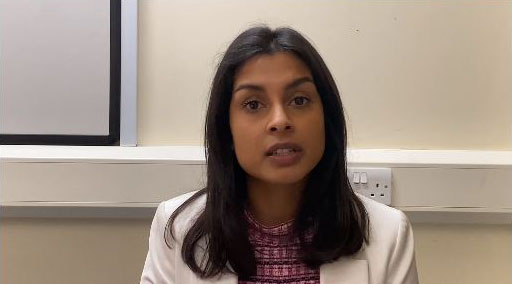4 What obstacles may I face?
It is very important that your enthusiasm, and interest in the topic you wish to investigate, drive you and support you through your project. However, it is equally valuable to consider, right from the start, the potential obstacles that may arise. Of course, sometimes these are unexpected, but as you have been working through this course you will probably have already identified things that might come up which could hinder you as you start on your research project
The major issue, perhaps, will be time. Time to prepare, time to carry out the research, time to put together your findings. If you are aware that this is an issue, you should be able to factor it in to your project planning and execution. Here is Meera again, sharing her practical experience. The major ‘obstacle’ she refers to is time.
Activity 5
As you watch, listen out for the details of what takes the time. She is working in a school environment, so if your area of expertise is different, consider how you will set aside time to cover the issues she refers to. Then, try the activities which follow.

Transcript
The seven statements below summarise what Meera says in the video when she talks about the time she devoted to her Y7 project in her school. They are in the wrong order; can you rearrange them so that they appear in the order in which she offered them in the video?
Using the following two lists, match each numbered item with the correct letter.
-
6
-
2
-
7
-
3
-
5
-
1
-
4
a.Getting the students’ consent.
b.Making sure parents are informed.
c.Making sure the literature is fed through the project and her practice.
d.Being open and candid, and justifying the research with the students.
e.Being aware of, and catering for those who do not wish to participate.
f.Getting all forms in and ready before starting to collect data.
g.Fitting the research around the existing demands of her job.
- 1 = e
- 2 = a
- 3 = d
- 4 = b
- 5 = c
- 6 = g
- 7 = f
Answer
- Fitting the research around the existing demands of her job.
- Getting the students’ consent.
- Making sure parents are informed.
- Getting all forms in and ready before starting to collect data.
- Making sure the literature is fed through the project and her practice.
- Being aware of, and catering for those who do not wish to participate.
- Being open and candid, and justifying the research with the students.
Now think about your own situation. What steps are you going to have to take, to prepare? Make notes for yourself against the key issues listed in the box below. In what order will you need to approach each step? Add any further practical details that you will need to prepare for, so that they do not become ‘obstacles’ to your progress.

